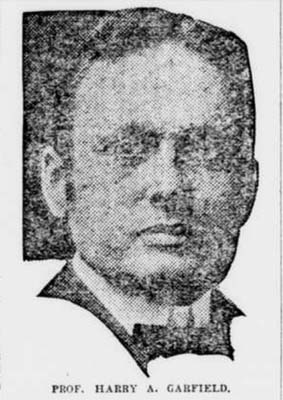|
NEWS EXCERPTS
-------------------------
|
Alaska Sentinel, Wrangell,
Alaska
Dated: October 10, 1907
SLAVES IN MASSACHUSETTS
House in Which They Were Sold Relic of Town of Hanover.
A relic of slavery days in New England in the middle of
the eighteenth century, the old Tilden house on winter street,
west Hanover, the only house on Winter street, West Hanover, the
only house in that town where slaves were kept for market, is
now being demolished, says the Boston Herald.
The house is one of the best-known landmarks in
Plymouth County and has stood for nearly 200 years. It was
used as a tavern in its early days and later for a residence.
Of recent years it has been abandoned to the elements and has
rapidly fallen into decay.
No one knows the exact date of the building of the
house, but historians agree that it was long before the
corporation of the town of Hanover in 1727.
Jedediah Dwelley, of North Hanover, who has
spent much time in gathering facts concerning the early history
of the town says: "While there was more or less buying and
selling of slaves (as in the middle of the eighteenth century
nearly all the wealthy families owned one or more) this probably
was the only place where the traffic was carried on for revenue.
I have seen two bills of slaves sold from this house. One
was from Job Tilden to a Mr. Bailey, of Scituate,
a negro child named Morrow, 9 years of age, of good
bodily health and a kind disposition."
One of Mr. Tilden's slaves named Cuffee
served as a soldier in the Revolutionary War, and according to
an old pay roll he was stationed at Hull, Mar. 1, 1777. He
was with Col. Bailey and died at Valley Forge. He
was known as Cuffee Tilden and was so inscribed on
the printed rolls.
The books of the First Congregational Church of Hanover
record the marriage by the Rev. Benjamin Bass on Feb. 8,
1751, of Jack and Billah, servants owned by Job
Tilden, and also the death of a negro boy owned by Job
Tiden, Feb. 12, 1760.
There are many other brief records of slaves kept in
different families in Hanover.
|
|
Alaska Sentinel, Wrangell, Alaska
Dated: October 10, 1907
HARRY A. GARFIELD

Another Son of the President
Has Fitted Himself for Large Things.
Williams College in Massachusetts has selected Prof.
Harry Augustus Garfield of Princeton as its president to
succeed Rev. Dr. Henry Hopins. Prof. Garfied is the
eldest son of James A. Garfield, twentieth President of
the United States, and was born Oct. 11, 1863, at Hiram, Portage
county, Ohio. He was graduated from Williams in 1885,
studied law at the Columbia Law School and then went abroad and
spent a year at Oxford and the Inns of Court in London.
On June 14, 1888, he married Miss Belle Hartford
Mason of Mentor, Ohio and the same year began law practice
in Cleveland. He rapidly became prominent in the
commercial and railroad business of Cleveland as a director of
the Cleveland Trust Company, vice president and director of the
Garfield Savings and Banking Company, and in 1898 president of
the Cleveland Chamber of Commerce. He was an organizer and
afterward president of the Municipal Association of that city, a
member of the National Municipal League Executive Committee, a
vice president of the National Civil Service Reform League, a
director of the American Social Science Association, chairman of
the social committee of the Cleveland Chamber of Commerce on the
reorganization of the United States consula_ service and a
trustee or director of several other Cleveland business and
civic associations. Since December, 1903, he has been
professor of politics in Princeton university. He is an
intimate friend of ex-President Cleveland and is popular at
Princeton.
Prof. Garfield's wide experience
with men adn affairs and the practical character of his career
make him, in the opinion of the trustees of Williams, at ideal
choice for executive of that college. Of late years
trustees of colleges and universities have been inclined to
select for executives men who are comparatively young and who
are practical business men as well as scholars. Prof.
Garfield is regarded as at excellent example of the modern
college president. |
|